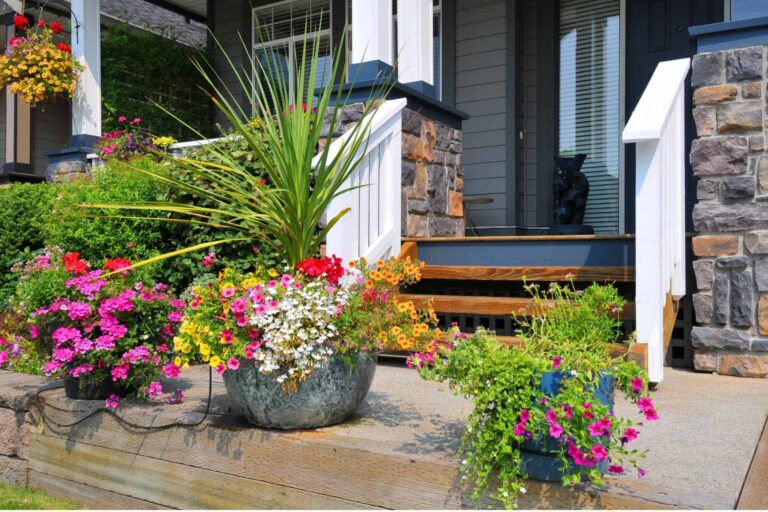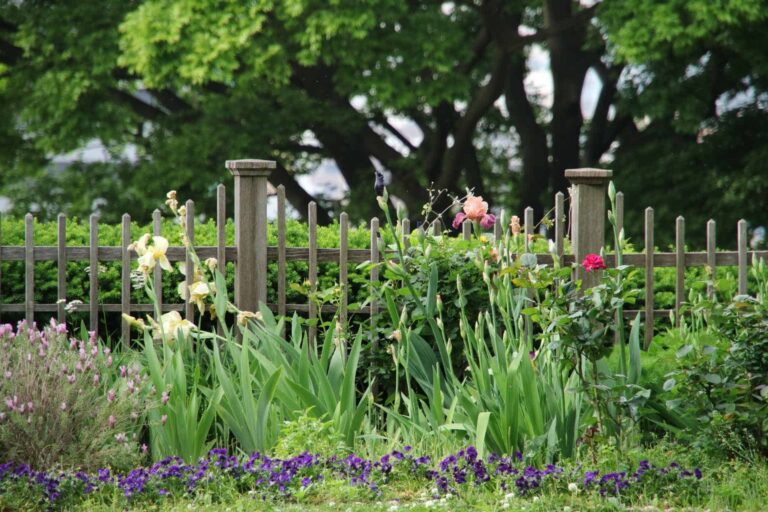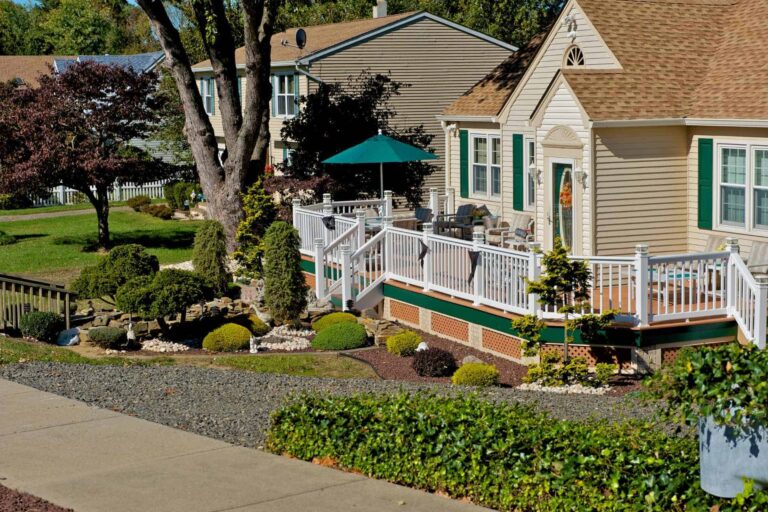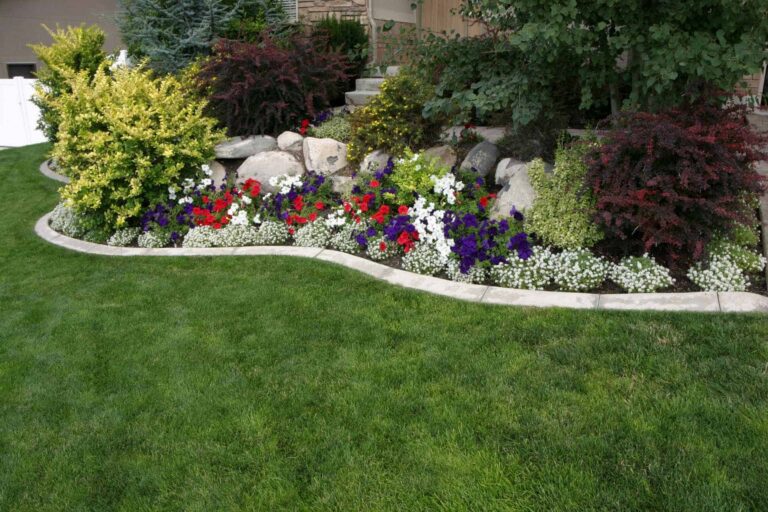Maximizing Space: Efficient Front Yard Boxwood Landscape Design
Boxwood, with its rich green foliage and compact growth, serves as a versatile element in landscape design, especially when it comes to beautifying the front yard. The practice of incorporating boxwood into front yard landscapes, renowned as front yard boxwood landscape design, is gaining traction due to its unique blend of aesthetic charm and practical benefits. This type of landscape design imparts an organized, clean look to your front yard, enhancing the curb appeal remarkably. Besides, boxwood is a low-maintenance plant, making it a preferred choice for homeowners who appreciate beauty but have limited time for upkeep. Through careful planning and design, you can transform your front yard into an inspiring, inviting space for relaxation and socialization. In this article, we will delve into the intricacies of front yard boxwood landscape design, revealing tips and techniques to maximize the use of space and create an efficient, attractive outdoor environment.
Benefits of Front Yard Boxwood Landscape Design
Boxwood’s benefits extend beyond its ornamental appeal. One of its primary advantages is its adaptability to various soil types, making it a suitable choice for diverse regions. Furthermore, it tolerates pruning exceptionally well, enabling homeowners to shape it as per their aesthetic vision, be it a simple border or ambitious topiary. Boxwoods also thrive in a wide range of climatic conditions, furthering their universal appeal.
The strategic positioning of boxwoods can create a considerable impact. Used as a border, they impart a neat, organized look and can also serve as visual breaks in large yards. Contrasting boxwoods with plants that bear colored flowers or foliage will highlight their rich green color, creating an appealing visual spectacle.
However, successful boxwood landscape design is not merely about planting and positioning. It requires integrating boxwoods seamlessly with other elements, such as walkways, benches, water features, and decorative items. This harmonious blending of different components can transform a plain yard into a thoughtfully designed outdoor living space.
Boxwood maintenance is relatively straightforward, adding to its attractiveness. Regular pruning ensures its compact shape and dense foliage. While boxwoods can attract certain pests, these can be managed effectively with appropriate care and treatments.
Boxwood’s versatility, ease of maintenance, and aesthetic appeal make it a perfect choice for front yard landscape design. With careful planning and design, you can create a front yard that is not only visually stunning but also a reflection of your personal style and taste.
Factors to Consider in Boxwood Landscape Design
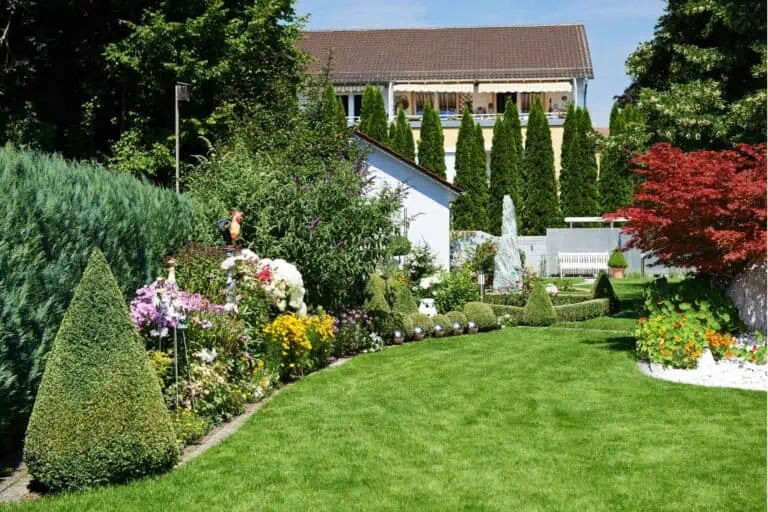
When planning a boxwood landscape design, there are several factors to consider to ensure the success and beauty of your project.
- Variety of Boxwoods: There are various types of boxwoods, each with its own growth habit and size. Choosing the right type that fits your design and environment is crucial.
- Soil and Sunlight: Boxwoods prefer well-drained soil and partial to full sun. However, in hotter climates, they benefit from some afternoon shade.
- Spacing: Proper spacing is crucial for the health of boxwoods. Overcrowding can lead to poor air circulation and increase the risk of diseases.
- Pruning Time: Pruning at the right time is essential for maintaining the shape and health of boxwoods. Late winter or early spring is generally the best time to prune.
- Pest and Disease Management: Boxwoods can be susceptible to certain pests and diseases. Regular monitoring and early detection are key to managing these issues.
Remember, a well-planned boxwood landscape can be a charming and low-maintenance addition to your yard.
Designing Your Front Yard Boxwood Landscape
Designing a boxwood landscape for your front yard involves more than just choosing the type of boxwood and planting it. It requires careful planning and consideration of the overall space and how the boxwoods will fit into it. Start by sketching out your yard and identifying any existing features such as paths, seating areas, or large trees. Use this as a starting point to determine where you want to incorporate the boxwoods.
Boxwoods are excellent for creating structured designs, so consider using them to outline paths or frame entrances and gates. They can also be used to form hedges or privacy screens, add depth and dimension to garden beds, or as standalone specimens for a focal point.
Remember to take into account the mature size and growth habits of the chosen boxwood variety when deciding where to plant them. Ensure there is enough space between each plant for air circulation to minimize the risk of diseases.
Lastly, consider the aesthetics. Boxwoods have a timeless appeal and can complement various styles, from formal to contemporary. Choose complementary plants and materials to create a cohesive and harmonious look. With careful planning and design, your front yard boxwood landscape will not only be functional but also beautifully appealing.
You may also like:
Maintenance Tips for Your Boxwood Landscape
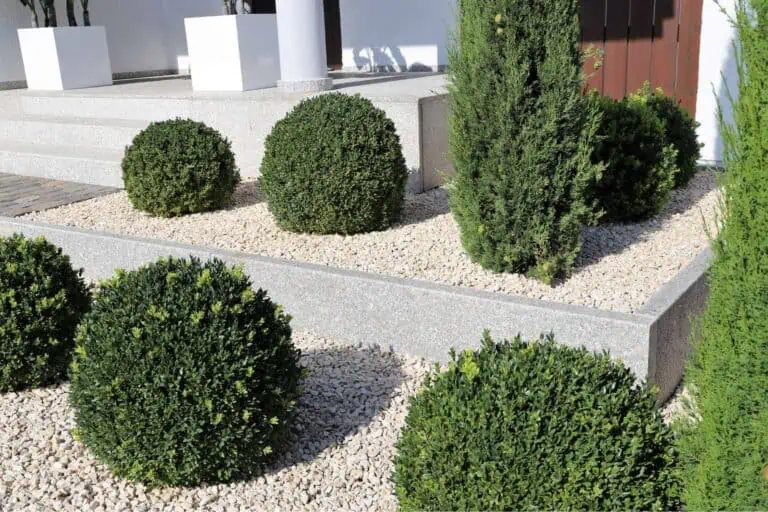
Maintaining your boxwood landscape involves regular watering, pruning, and disease control.
Boxwoods are drought-tolerant but thrive best when watered thoroughly, especially during dry spells. However, refrain from overwatering as it can lead to root rot. Monitor your boxwoods’ moisture levels and adjust watering accordingly.
Pruning is essential to maintain the desired shape and size of your boxwoods. It is recommended to prune in late winter or early spring before the new growth begins. This also helps to maintain good air circulation and mitigates the risk of fungal diseases.
Keep a close eye on your boxwoods for any signs of disease or pests. Common issues include boxwood blight, leaf miners, and spider mites. Early detection and treatment can save your boxwoods from severe damage.
Lastly, consider mulching around your boxwoods. Mulch helps retain moisture, suppresses weeds, and enriches the soil as it decomposes. A layer of mulch also gives your boxwood landscape a tidy, finished look.
With these maintenance tips, your boxwood landscape can remain healthy, attractive, and enjoyable for years to come. Remember, the key to a thriving boxwood landscape is a combination of regular care and preventive measures.
Conclusion
Creating and maintaining a boxwood landscape is a rewarding endeavor that enhances the aesthetic appeal of your front yard. It’s an opportunity to express creativity, indulge in a comforting routine, and cultivate a space that not only adds beauty but also value to your property. However, a thriving boxwood landscape is not achieved overnight; it requires patience, regular care, and informed preventive measures. By selecting appropriate plant variants, designing purposefully, adhering to watering guidelines, pruning effectively, vigilantly watching out for diseases, and utilizing mulch, you can enjoy a lush, green landscape year-round. Additionally, remember that every landscape is unique and may require slightly different care based on factors such as climate, soil type, and exposure to sunlight. So, be observant, be adaptable, and most importantly, enjoy the process. Here’s to your flourishing boxwood landscape and the joy it brings to your home and life!


